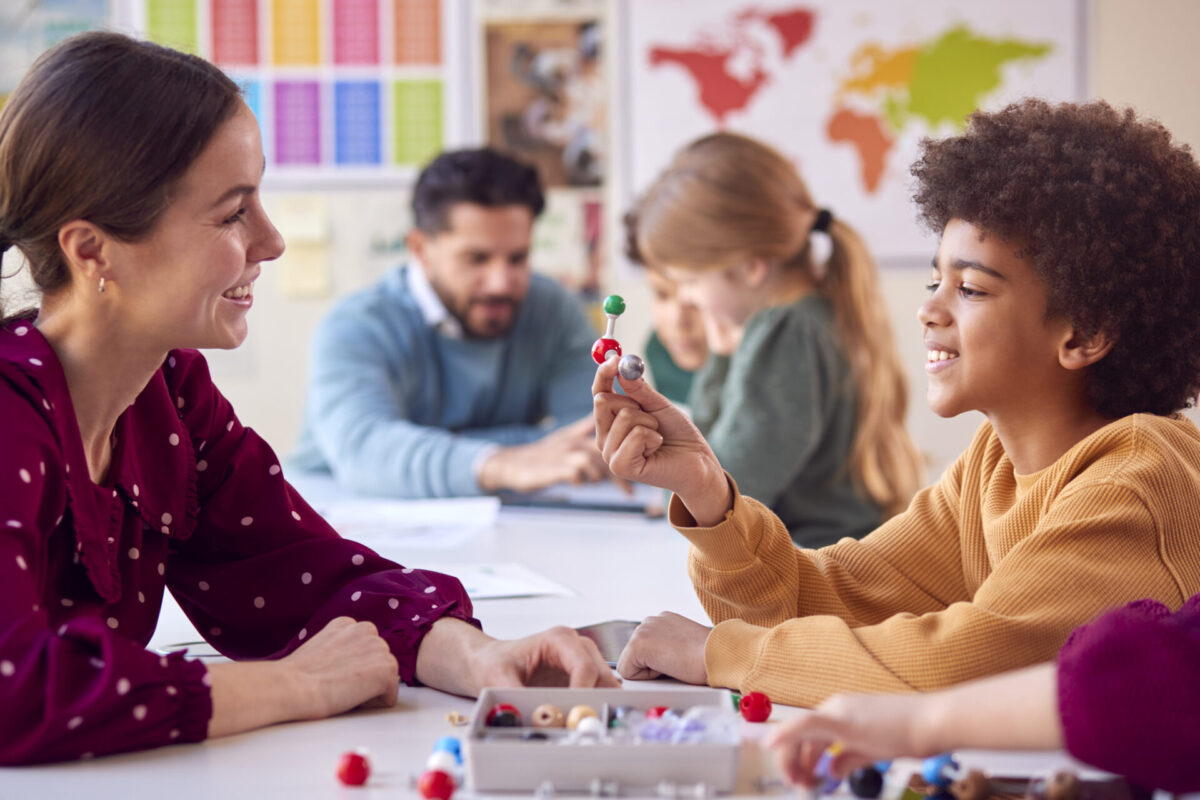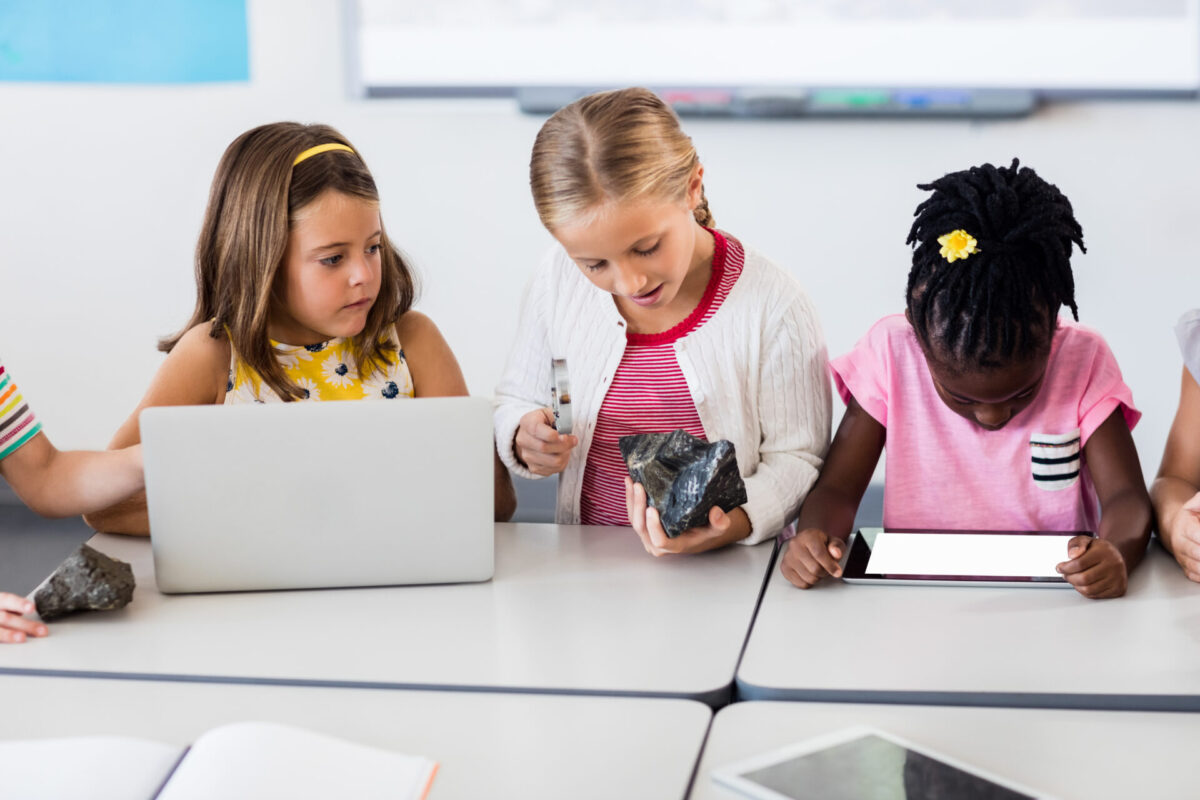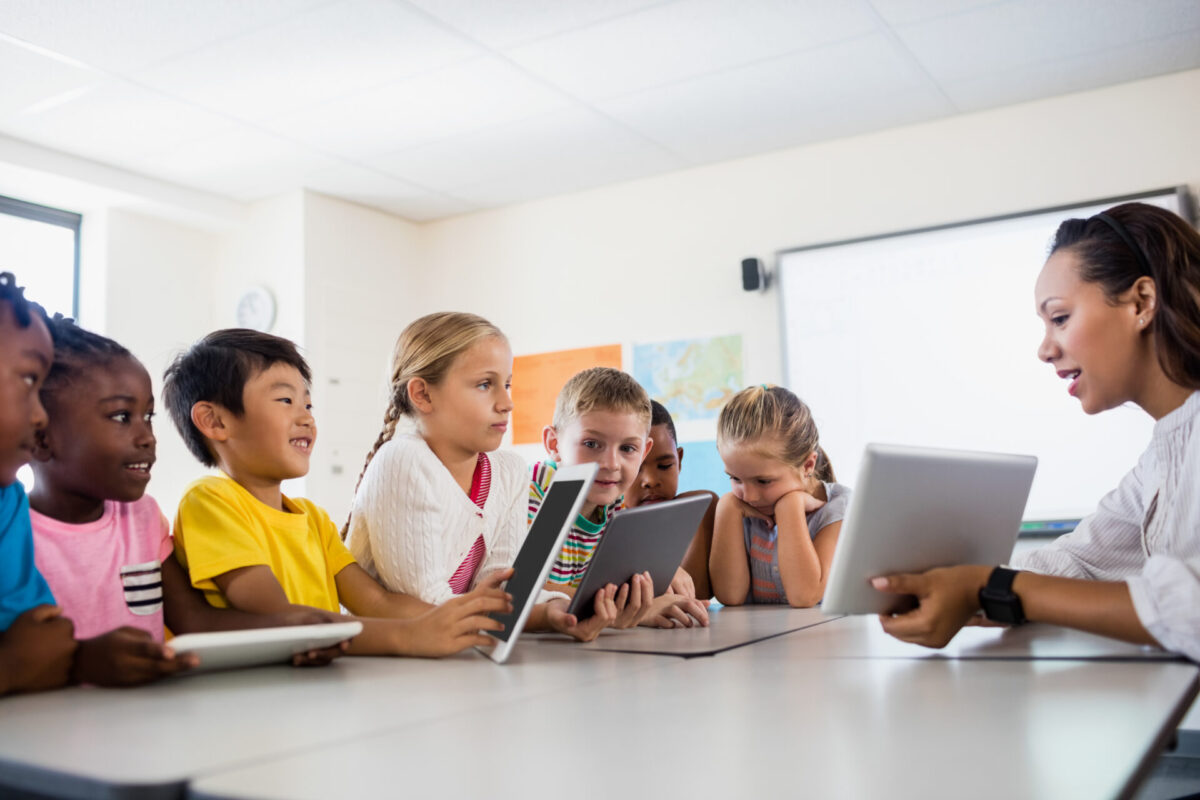In the dynamic landscape of education, fostering engagement is essential for effective learning. As educators, we strive to create interactive learning environments where elementary school students can actively participate, collaborate, and explore. In this blog post, we’ll explore seven engaging strategies for interactive learning in elementary classrooms, igniting students’ curiosity and fostering a love for learning.
1. Hands-On Activities:
Hands-on activities provide students with tangible experiences that deepen their understanding of concepts and promote active engagement. From science experiments to art projects to math manipulatives, hands-on activities allow students to learn by doing, sparking curiosity and fostering creativity.

2. Educational Games:
Games are an excellent way to make learning fun and interactive. Whether it’s a board game, a digital game, or a classroom scavenger hunt, educational games motivate students to apply their knowledge, think critically, and problem-solve collaboratively. Games also provide opportunities for social interaction and peer learning, enhancing the overall learning experience.
3. Collaborative Projects:
Collaborative projects encourage students to work together, communicate effectively, and share ideas to achieve a common goal. Whether it’s a group presentation, a class mural, or a research project, collaborative projects promote teamwork, creativity, and critical thinking skills. By working collaboratively, students learn from each other and develop essential collaboration skills that are valuable both inside and outside the classroom.

4. Multimedia Presentations:
Multimedia presentations offer a dynamic way to present information and engage students visually and auditory. Teachers can incorporate videos, interactive slideshows, animations, and educational apps to deliver content in a captivating and memorable way. Multimedia presentations cater to different learning styles and preferences, allowing students to explore concepts through various multimedia formats.
5. Virtual Field Trips:
Virtual field trips provide students with immersive learning experiences without leaving the classroom. With virtual reality technology or online resources, teachers can take students on virtual tours to museums, historical sites, and natural wonders around the world. Virtual field trips offer students the opportunity to explore new places, cultures, and ideas, broadening their horizons and fostering a sense of curiosity about the world around them.
6. Inquiry-Based Learning:
Inquiry-based learning empowers students to ask questions, investigate topics of interest, and discover answers through hands-on exploration and critical thinking. Teachers can facilitate inquiry-based learning by posing open-ended questions, providing resources for research, and guiding students through the inquiry process. Inquiry-based learning encourages curiosity, independence, and a deeper understanding of concepts.

7. Interactive Technology:
Interactive technology, such as interactive whiteboards, tablets, and educational apps, can enhance classroom instruction and engage students in interactive learning experiences. Teachers can use interactive technology to present interactive lessons, conduct virtual simulations, and facilitate interactive discussions. Interactive technology provides students with opportunities to actively participate in their learning and interact with content in meaningful ways.

Interactive learning is essential for engaging elementary school students and fostering a love for learning. By incorporating hands-on activities, educational games, collaborative projects, multimedia presentations, virtual field trips, inquiry-based learning, and interactive technology into classroom instruction, teachers create dynamic learning environments where students are actively involved in their learning journey. Together, let’s embrace interactive learning strategies to inspire curiosity, ignite creativity, and empower students to become lifelong learners.

